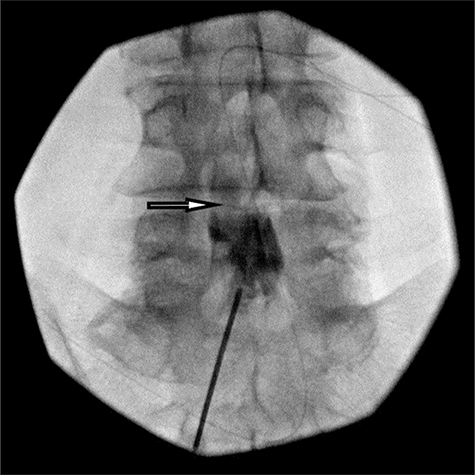Epidural Blood Patch
An epidural blood patch is a simple yet highly effective treatment for spinal headaches caused by cerebrospinal fluid (CSF) leaks. These headaches often worsen when sitting or standing and improve when lying down, making them particularly disruptive. By using a small amount of the patient’s own blood to seal the leak in the spinal canal, this minimally invasive procedure offers rapid symptom relief and helps restore normal pressure around the brain and spinal cord.
The treatment is commonly used after procedures such as lumbar punctures or epidural anesthesia, but it’s also beneficial for spontaneous spinal fluid leaks. Most patients report significant improvement within hours of the procedure.

What is it?
An epidural blood patch is a procedure used to treat severe headaches caused by spinal fluid leaks, often occurring after spinal procedures or spontaneously. It uses your own blood to seal the leak.
How is it performed?
Under sterile conditions and fluoroscopic guidance, a small amount of your blood is drawn and then injected into your epidural space. The procedure typically takes 30 minutes.
Keypoint #1-Lorem Ipsum
Lorem Ipsum mon fringilla dolor felis amet fusce.
• Libero auctor
• Enim molestie iaculis
• Massa bibendum
• Ultrices varius
Metus euismod tellus penatibus in ex morbi euismod mollis.
Phasellus venenatis augue luctus sollicitudin elementum suspendisse.
Treatment Benefits
This procedure offers rapid relief of debilitating headaches caused by CSF leaks. Because it uses the patient’s own blood, the risk of adverse reaction is minimal. Additional benefits include a short recovery time, low risk of complications, and the ability to resume normal activities soon after treatment. It’s a targeted, natural solution that promotes healing and restores normal spinal fluid dynamics.
Who Can Benefit From This Treatment
Epidural blood patch is most commonly recommended for individuals experiencing post-dural puncture headaches or spontaneous spinal fluid leaks. Ideal candidates often report headache relief when lying down and worsening symptoms while upright. A proper diagnosis by a healthcare provider, sometimes supported by imaging, can determine whether this treatment is appropriate.
Learn more about Epidural Blood Patch by contacting the Minimally Invasive Spine and Pain Institute—our team is here to help you explore your options.
Aftercare for Epidural Blood Patch
After receiving an epidural blood patch, most patients experience rapid improvement in headache symptoms. It’s normal to feel mild pressure or soreness in the lower back at the injection site. Patients are usually advised to rest for a short period after the procedure and avoid strenuous activity for the rest of the day. Lying flat for several hours post-treatment can help enhance the patch’s effectiveness and allow the blood to seal the leak properly
Tips for a Smooth Recovery
Follow these guidelines to support healing after an epidural blood patch:
- Rest and lie flat for several hours following the procedure
- Avoid lifting, bending, or twisting for at least 24 hours
- Drink plenty of fluids to stay hydrated and support spinal fluid balance
- Use ice packs on the lower back if you experience mild soreness
- Monitor for return of symptoms or signs of infection and report them to your provider

